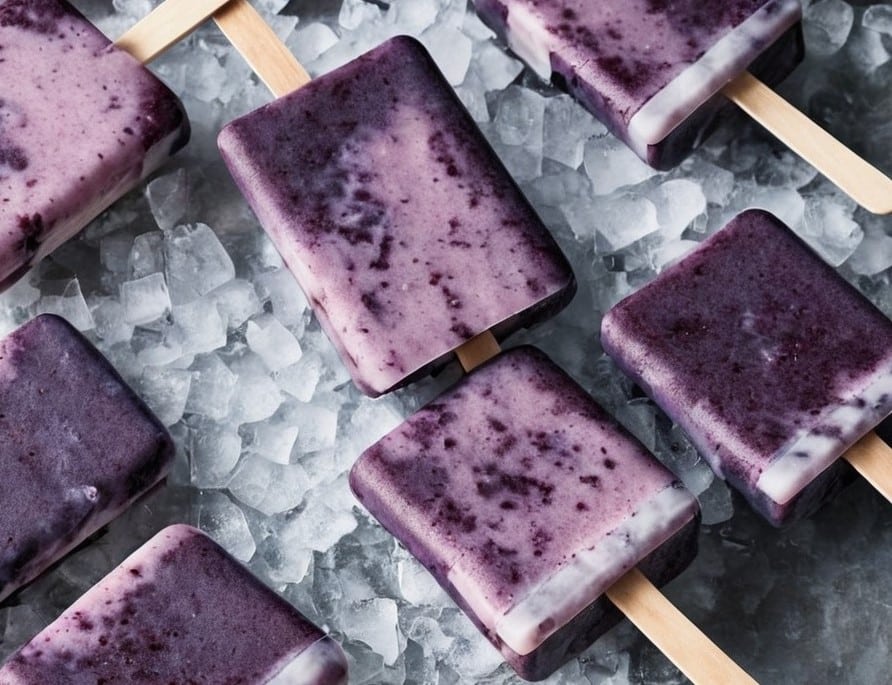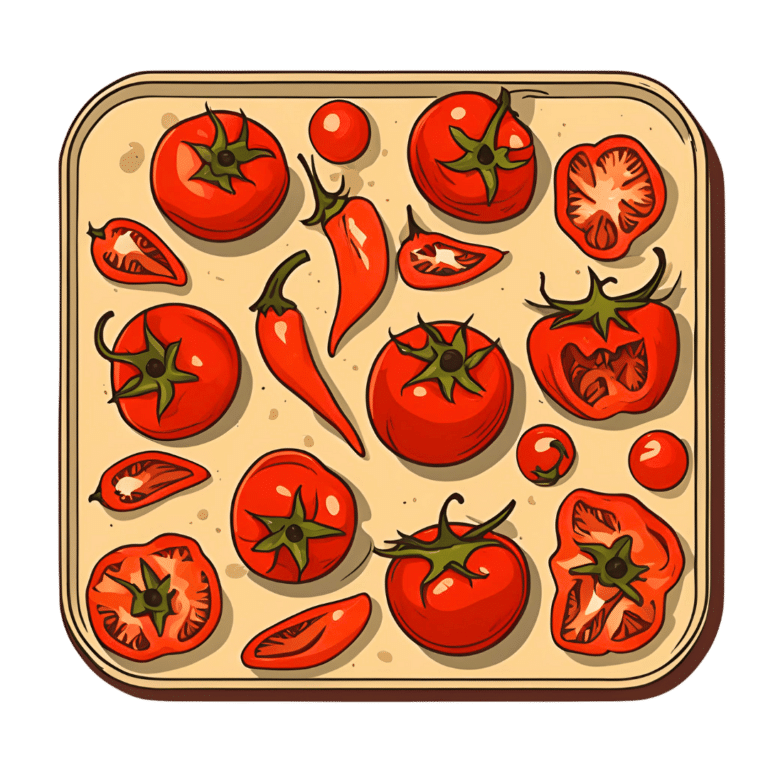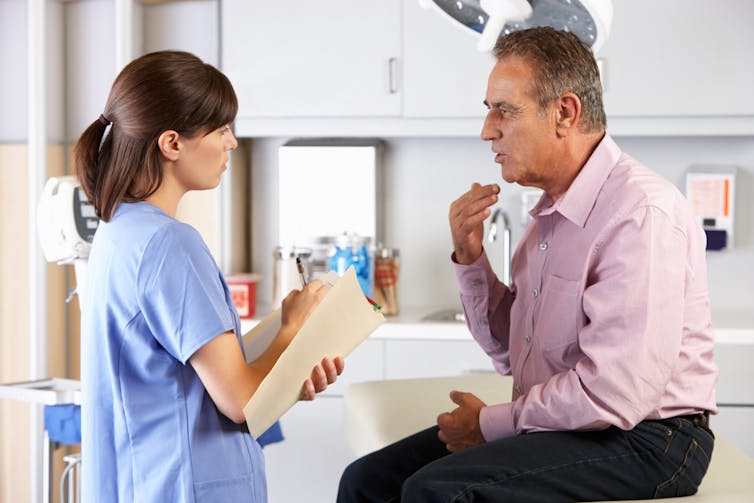
Blood-Sugar-Friendly Ice Pops
10almonds is reader-supported. We may, at no cost to you, receive a portion of sales if you purchase a product through a link in this article.
This generic food product has so many regional variant names that it’s difficult to get a universal name, but in N. America they’re also known by the genericized brand name of popsicles. Anyway, they’re usually very bad news for blood sugars, being merely frozen juice even if extra sugar wasn’t added. Today’s recipe, on the other hand, makes for a refreshing and nutrient-dense treat that won’t spike your blood glucose!
You will need
- 1 cup fresh blueberries
- 1 can (12oz/400g) coconut milk
- ½ cup yogurt with minimal additives
- 1 tbsp honey (omit if you prefer less sweetness)
- Juice of ¼ lime (increase if you prefer more sourness)
Method
(we suggest you read everything at least once before doing anything)
1) Blend everything
2) Pour into ice pop molds and freeze overnight
3) Serve at your leisure:

Enjoy!
Want to learn more?
For those interested in some of the science of what we have going on today:
- Which Sugars Are Healthier, And Which Are Just The Same?
- 10 Ways To Balance Blood Sugars
- Can Saturated Fats Be Healthy? ← the fats in coconut are a good source of medium-chain triglycerides (MCTs), which are easily broken down as a good energy source and (enjoyed in moderation) thus unlikely to cause any cardiovascular problems, as little to nothing (usually: nothing) of it will be stored.
Take care!
Don’t Forget…
Did you arrive here from our newsletter? Don’t forget to return to the email to continue learning!
Recommended
Learn to Age Gracefully
Join the 98k+ American women taking control of their health & aging with our 100% free (and fun!) daily emails:
-
The Brain Alarm Signs That Warn Of Dementia
10almonds is reader-supported. We may, at no cost to you, receive a portion of sales if you purchase a product through a link in this article.
When it comes to predicting age-related cognitive impairment:
First there are genetic factors to take into account (such as the APOE4 gene for Alzheimer’s), as well as things such as age and sex.
When it comes to sex, by the way, what matters here is hormones, which is why [it seems; this as technically as yet unproven with full rigor, but the hypothesis is sound and there is a body of evidence gradually being accumulated to support it] postmenopausal women with untreated menopause get Alzheimer’s at a higher rate and deteriorate more quickly:
Alzheimer’s Sex Differences May Not Be What They Appear
Next, there are obviously modifiable lifestyle factors to take into account, things that will reduce your risk such as getting good sleep, good diet, good exercise, and abstaining from alcohol and smoking, as well as oft-forgotten things such as keeping cognitively active and, equally importantly, socially active:
How To Reduce Your Alzheimer’s Risk
(the article outlines what matters the most in each of the above areas, by the way, so that you can get the most bang-for-buck in terms of lifestyle adjustments)
Lastly (in the category of risk factors), there are things to watch out for in the blood such as hypertension and high cholesterol.
Nipping it in the blood
In new research (so new it is still ongoing, but being at year 2 of a 4-year prospective study, they have published a paper with their results so far), researchers have:
- started with the premise “dementia is preceded by mild cognitive impairment”
- then, asked the question “what are the biometric signs of mild cognitive impairment?”
Using such tools as functional near-infrared spectroscopy (fNIRS) while the participants performed cognitive tasks, they were able to record changes in plasma levels of extracellular vesicles, assessing them with small-particle flow cytometry.
Translating from sciencese: they gave the participants mental tasks, and while they completed them, the researchers scanned their brains and monitored blood flow and the brain’s ability to compensate for any lack of it.
What they found:
- in young adults, blood flow increased, facilitating neurovascular coupling (this is good)
- in older adults, blood flow did not increase as much, but they engaged other areas of the brain to compensate, by what’s called functional connectivity (this is next best)
- in those with mild cognitive impairment, blood flow was reduced, and they did not have the ability to compensate by functional connectivity (this is not good)
They also performed a liquid biopsy, which sounds alarming but it just means they took some blood, and tested this for density of cerebrovascular endothelial extracellular vesicles (CEEVs), which—in more prosaic words—are bits from the cells lining the blood vessels in the brain.
People with mild cognitive impairment had more of these brain bits in their blood than those without.
You can read the paper itself here:
What this means
The science here is obviously still young (being as it is still in progress), but this will likely contribute greatly to early warning signs of dementia, by catching mild cognitive impairment in its early stages, by means of a simple blood test, instead of years of wondering before getting a dementia diagnosis.
And of course, forewarned is forearmed, so if this is something that could be done as a matter of routine upon hitting the age of, say, 65 and then periodically thereafter, it would catch a lot of cases while there’s still more time to turn things around.
As for how to turn things around, well, we imagine you have now read our “How To Reduce Your Alzheimer’s Risk” article linked up top (if not, we recommend checking it out), and there is also…
Do Try This At Home: The 12-Week Brain Fitness Program To Measurably Boost Your Brain
Take care!
When it comes to predicting age-related cognitive impairment:
First there are genetic factors to take into account (such as the APOE4 gene for Alzheimer’s), as well as things such as age and sex.
When it comes to sex, by the way, what matters here is hormones, which is why [it seems; this as technically as yet unproven with full rigor, but the hypothesis is sound and there is a body of evidence gradually being accumulated to support it] postmenopausal women with untreated menopause get Alzheimer’s at a higher rate and deteriorate more quickly:
Alzheimer’s Sex Differences May Not Be What They Appear
Next, there are obviously modifiable lifestyle factors to take into account, things that will reduce your risk such as getting good sleep, good diet, good exercise, and abstaining from alcohol and smoking, as well as oft-forgotten things such as keeping cognitively active and, equally importantly, socially active:
How To Reduce Your Alzheimer’s Risk
(the article outlines what matters the most in each of the above areas, by the way, so that you can get the most bang-for-buck in terms of lifestyle adjustments)
Lastly (in the category of risk factors), there are things to watch out for in the blood such as hypertension and high cholesterol.
Nipping it in the blood
In new research (so new it is still ongoing, but being at year 2 of a 4-year prospective study, they have published a paper with their results so far), researchers have:
- started with the premise “dementia is preceded by mild cognitive impairment”
- then, asked the question “what are the biometric signs of mild cognitive impairment?”
Using such tools as functional near-infrared spectroscopy (fNIRS) while the participants performed cognitive tasks, they were able to record changes in plasma levels of extracellular vesicles, assessing them with small-particle flow cytometry.
Translating from sciencese: they gave the participants mental tasks, and while they completed them, the researchers scanned their brains and monitored blood flow and the brain’s ability to compensate for any lack of it.
What they found:
- in young adults, blood flow increased, facilitating neurovascular coupling (this is good)
- in older adults, blood flow did not increase as much, but they engaged other areas of the brain to compensate, by what’s called functional connectivity (this is next best)
- in those with mild cognitive impairment, blood flow was reduced, and they did not have the ability to compensate by functional connectivity (this is not good)
They also performed a liquid biopsy, which sounds alarming but it just means they took some blood, and tested this for density of cerebrovascular endothelial extracellular vesicles (CEEVs), which—in more prosaic words—are bits from the cells lining the blood vessels in the brain.
People with mild cognitive impairment had more of these brain bits in their blood than those without.
You can read the paper itself here:
What this means
The science here is obviously still young (being as it is still in progress), but this will likely contribute greatly to early warning signs of dementia, by catching mild cognitive impairment in its early stages, by means of a simple blood test, instead of years of wondering before getting a dementia diagnosis.
And of course, forewarned is forearmed, so if this is something that could be done as a matter of routine upon hitting the age of, say, 65 and then periodically thereafter, it would catch a lot of cases while there’s still more time to turn things around.
As for how to turn things around, well, we imagine you have now read our “How To Reduce Your Alzheimer’s Risk” article linked up top (if not, we recommend checking it out), and there is also…
Do Try This At Home: The 12-Week Brain Fitness Program To Measurably Boost Your Brain
Take care!
Share This Post
-
How gender-affirming care improves trans mental health
10almonds is reader-supported. We may, at no cost to you, receive a portion of sales if you purchase a product through a link in this article.
In recent years, a growing number of states have passed laws restricting or banning gender-affirming care for transgender people, particularly minors. As conversations about gender-affirming care increase, so do false narratives about it, with some opponents falsely suggesting that it’s harmful to mental health.
Despite widespread attacks against gender-affirming care, research clearly shows that it improves mental health outcomes for transgender people.
Read on to learn more about what gender-affirming care is, how it benefits mental well-being, and how you can access it.
What is gender-affirming care?
Gender-affirming care describes a range of medical interventions that help align people’s bodies with their gender identities. While anyone can seek gender-affirming care in the form of laser hair removal, breast augmentation, erectile dysfunction medication, or hormone therapy, among other treatments, most conversations about gender-affirming care center around transgender people, whose gender identity or gender expression does not conform to their sex assigned at birth.
Gender-affirming care for trans people varies based on age. For example, some trans adults seek hormone replacement therapy (HRT) or gender-affirming surgeries that help their bodies match their internal sense of gender.
Trans kids entering adolescence might be prescribed puberty blockers, which temporarily delay the production of hormones that initiate puberty, to give them more time to figure out their gender identities before deciding on next steps. This is the same medication given to cisgender kids—whose gender identities match the sex they were assigned at birth—experiencing early puberty.
What is gender dysphoria?
Gender dysphoria describes a feeling of unease that some trans people experience when their perceived gender doesn’t match their gender identity. This can lead to a range of mental health conditions that affect their quality of life
Some trans people may manage gender dysphoria by wearing gender-affirming clothing, opting for a gender-affirming hairstyle, or asking others to refer to them by a name and pronouns that authentically represent them. Others may need gender-affirming care to feel at home in their bodies.
Trans people who desire gender-affirming care and have not been able to access it experience psychological distress, including depression, anxiety, self-harm, and suicidal ideation. The Trevor Project’s 2023 U.S. National Survey on the Mental Health of LGBTQ Young People found that roughly half of trans youth “seriously considered attempting suicide in the past year.”
How does gender-affirming care improve mental health?
For trans adults, gender-affirming care can alleviate gender dysphoria, which has been shown to improve both short-term and long-term mental health. A 2018 study found that trans adults who do not undergo HRT are four times more likely to experience depression than those who do, although not all trans people desire HRT.
Extensive research has shown that gender-affirming care also alleviates gender dysphoria and improves mental health outcomes in trans kids, teens, and young adults. A 2022 study found that access to HRT and puberty blockers lowered the odds of depression in trans people between the ages of 13 and 20 by 60 percent and reduced the risk of self-harm and suicidal thoughts by 73 percent.
Both the Endocrine Society—which aims to advance hormone research—and the American Academy of Pediatrics recommend that trans kids and teens have access to developmentally appropriate gender-affirming care.
How can I access gender-affirming care?
If you’re a trans adult seeking gender-affirming care or a guardian of a trans kid or teen who’s seeking gender-affirming care, talk to your health care provider about your options. You can find a trans-affirming provider by searching the World Professional Association for Transgender Health directory or visiting your local LGBTQ+ health center or Planned Parenthood.
Some gender-affirming care may not be covered by insurance. Learn how to make the most of your coverage from the National Center for Transgender Equality. Find insurance plans available through the Marketplace that cover gender-affirming care in some states through Out2Enroll.
Some states restrict or ban gender-affirming care. Learn about the laws in your state by visiting the Trans Legislation Tracker.
Where can trans people and their families find mental health support?
In addition to working with a trans-affirming therapist, trans people and their families can find mental health support through these free services:
- PFLAG offers resources for families and friends of LGBTQ+ people. Find a PFLAG chapter near you.
- The Trevor Project’s hotline has trained counselors who help LGBTQ+ youth in crisis. Call the TrevorLifeline 1-866-488-7386 or text START to 678-678.
- The Trans Lifeline was created by and for the trans community to support trans people in crisis. You can reach the Trans Lifeline hotline at 1-877-565-8860.
For more information, talk to your health care provider.
If you or anyone you know is considering suicide or self-harm or is anxious, depressed, upset, or needs to talk, call the Suicide & Crisis Lifeline at 988 or text the Crisis Text Line at 741-741. For international resources, here is a good place to begin.
This article first appeared on Public Good News and is republished here under a Creative Commons license.
Share This Post
-
Cherries vs Blackberries – Which is Healthier?
10almonds is reader-supported. We may, at no cost to you, receive a portion of sales if you purchase a product through a link in this article.
Our Verdict
When comparing cherries to blackberries, we picked the blackberries.
Why?
In terms of macros, cherries have more carbs while blackberries have more protein and fiber. The protein of course is a tiny amount and an even tinier difference, and/but it’s worth noting that the fiber isn’t, and blackberries have more than 3x the fiber. So, a win for blackberries in this category.
In the category of vitamins, cherries have more of vitamins A, B1, B2, and B6, while blackberries have more of vitamins B3, B5, B9, C, E, K, and choline. Another win for blackberries.
When it comes to minerals, cherries have a tiny bit more potassium, while blackberries have considerably more calcium, copper, iron, magnesium, manganese, phosphorus, selenium, and zinc. Another easy win for blackberries.
Both fruits have abundant antioxidants, but as many are different, and comparison between them becomes more subjective than we have room for here.
In short, enjoy either or both, but we say blackberries win overall on macro- and micronutrients!
Want to learn more?
You might like to read:
Cherries’ Very Healthy Wealth Of Benefits
Take care!
Share This Post
Related Posts
-
Tartar Removal At Home & How To Prevent Tartar
10almonds is reader-supported. We may, at no cost to you, receive a portion of sales if you purchase a product through a link in this article.
Three things to bear in mind:
- Tartar is hardened plaque.
- Plaque is an infected biofilm that expands the natural thin film on teeth.
- Healthy biofilm resists plaque and tartar formation.
Therefore, the recommended approach is a multistep program:
The Complete Mouth Care System
Dr. Phillips recommends to use these five products in this order twice daily:
- Zellie’s Mints & Gum: having 6–10 grams of xylitol daily will help to loosen plaque on teeth so that the following program is more effective. Xylitol protects from mouth acidity and help to remineralize teeth.
- CloSYS Prerinse: CloSYS will prepare your teeth for brushing. This pH neutral rinse ensures that brushing teeth does not occur in an acidic mouth and therefore easily damage teeth.
- Crest Cavity Protection Regular Paste: has an active ingredient of sodium fluoride at optimal concentration (not stannous fluoride). This paste has the proper abrasion and no glycerine.
- Listerine: is an effective rinse that targets the bacteria that cause plaque build up and gingivitis with three active ingredients: eucalyptus essential oil, menthol essential oil, and thymol essential oil. As such, unlike many mouthwashes, listerine does not harm the mouth’s diversity of good bacteria or the mouth’s production of nitric oxide.
- ACT Anticavity Rinse: ACT is a very dilute but extremely effective sodium fluoride solution. It helps prevent and reverse cavities, strengthen teeth, reduce sensitivity, and leaves your breath fresh.
She advises us that by doing this twice-daily over 6 months, we can expect significant tartar reduction, and indeed, that dental appointments may reveal minimal or no need for tartar removal.
For more on all of this, enjoy:
Click Here If The Embedded Video Doesn’t Load Automatically!
Want to learn more?
You might also like to read our own three-part series:
- Toothpastes & Mouthwashes: Which Help And Which Harm?
- Flossing Without Flossing?
- Less Common Oral Hygiene Options ← we recommend the miswak! Not only does it clean the teeth as well as or better than traditional brushing, but also it changes the composition of saliva to improve the oral microbiome, effectively turning your saliva into a biological mouthwash that kills unwanted microbes and is comfortable for the ones that should be there.
Take care!
Don’t Forget…
Did you arrive here from our newsletter? Don’t forget to return to the email to continue learning!
Learn to Age Gracefully
Join the 98k+ American women taking control of their health & aging with our 100% free (and fun!) daily emails:
-
What are house dust mites and how do I know if I’m allergic to them?
10almonds is reader-supported. We may, at no cost to you, receive a portion of sales if you purchase a product through a link in this article.
People often believe they are allergic to house dust. But of the 20% of Australians suffereing with allergies, a number are are actually allergic to microscopic house dust mites.
House dust mites belong to the same family as spiders and ticks. They measure just 0.2-0.3 mm, with 50 fitting on a single pinhead. They live for 65–100 days, and females lay 60–100 eggs in their life.
Some 50 house dust mites can fit on one pinhead. Choksawatdikorn/Shutterstock House dust mites love temperate climates and humidity. They feed off the skin cells we and animals shed, as well as mould, which they digest using special enzymes. These enzymes are excreted in their poo about 20 times a day. They also shed fragments of their exoskeletons.
All these fragments trigger allergies in people with this type of allergic rhinitis (which is also known as hay fever)
shuttertock. PeopleImages.com – Yuri A/Shutterstock What are the symptoms?
When people with house dust mite allergy inhale the allergens, they penetrate the mucous membranes of the airways and eyes. Their body recognises the allergens as a threat, releasing chemicals including one called histamine.
This causes symptoms including a runny nose, an itchy nose, eyes and throat, sneezing, coughing and a feeling of mucus at the back of your throat (known as a post-nasal drip).
People with this type of allergy usually mouth breath, snore, rub their nose constantly (creating a nasal crease called the “dust mite salute”) and have dark shadows under their eyes.
House dust mite allergy can also cause poor sleep, constant tiredness, reduced concentration at work or school and lower quality of life.
For people with eczema, their damaged skin barrier can allow house dust mite proteins in. This prompts immune cells in the skin to release chemicals which make already flared skin become redder, sorer and itchier, especially in children.
Symptoms of house dust mite allergy occur year round, and are often worse after going to bed and when waking in the morning. But people with house dust mite allergy and pollen allergies find their year-round symptoms worsen in spring.
How is it diagnosed?
House dust mite allergy symptoms often build up over months, or even years before people seek help. But an accurate diagnosis means you can not only access the right treatment – it’s also vital for minimising exposure.
Your clinician can talk you through treatment options and how to minimise exposure. Monkey Business Images/Shutterstock Doctor and nurse practitioners can order a blood test to check for house dust mite allergy.
Alternatively, health care providers with specialised allergy training can perform skin prick tests. This involves placing drops of the allergens on the arm, along with a positive and negative “control”. After 15 minutes, those who test positive will have developed a mosquito bite-like mark.
How is it treated?
Medication options include one or a combination of:
- daily non-sedating antihistamines
- a steroid nasal spray
- allergy eye drops.
Your health care professional will work with you to develop a rhinitis (hay fever) medical management plan to reduce your symptoms. If you’re using a nasal spray, your health provider will show you how to use it, as people often use it incorrectly.
If you also have asthma or eczema which is worsened by dust mites, your health provider will adapt your asthma action plan or eczema care plan accordingly.
If you experience severe symptoms, a longer-term option is immunotherapy. This aims to gradually turn off your immune system’s ability to recognise house dust mites as a harmful allergen.
Immunotherapy involves taking either a daily sublingual tablet, under the tongue, or a series of injections. Injections require monthly attendances over three years, after the initial weekly build-up phase.
These are effective, but are costly (as well as time-consuming). So it’s important to weigh up the potential benefits and downsides with your health-care provider.
How can you minimise house dust mites?
There are also important allergy minimisation measures you can take to reduce allergens in your home.
Each week, wash your bedding and pyjamas in hot water (over 60°C). This removes house dust mite eggs and debris.
Opt for doonas, covers or quilts that can be washed in hot water above 60°C. Alternatively, low-cost waterproof or leak proof covers can keep house dust mites out.
If you can, favour blinds and wood floors over curtains and carpet. Dust blinds and surfaces with a damp cloth each week and vacuum while wearing a mask, or have someone else do it, as house dust mites can become airborne during cleaning.
But beware of costly products with big marketing budgets and little evidence to support their use. A new mattress, for example, will always be house dust mite-free. But once slept on, the house dust mite life cycle can start.
Mattress protectors and toppers commonly claim to be “hypoallergenic”, “anti-allergy” or “allergy free”. But their pore sizes are not small enough to keep house dust mites and their poo out, or shed skin going through.
Sprays claiming to kill mites require so much spray to penetrate the product that it’s likely to become wet, may smell like the spray and, unless dried properly, may grow mould.
Finally, claims that expensive vacuum cleaners can extract all the house dust mites are unsubstantiated.
For more information, visit healthdirect.gov.au or the Australian Society of Clinical Immunology and Allergy.
Deryn Lee Thompson, Eczema and Allergy Nurse; Lecturer, University of South Australia
This article is republished from The Conversation under a Creative Commons license. Read the original article.
Don’t Forget…
Did you arrive here from our newsletter? Don’t forget to return to the email to continue learning!
Learn to Age Gracefully
Join the 98k+ American women taking control of their health & aging with our 100% free (and fun!) daily emails:
-
The Sucralose News: Scaremongering Or Serious?
10almonds is reader-supported. We may, at no cost to you, receive a portion of sales if you purchase a product through a link in this article.
What’s the news on sucralose?
These past days the press has been abuzz with frightening tales:
- This Common Artificial Sweetener Can Break Down DNA, Scientists Warn
- Sucralose Damages DNA, Linked to Leaky Gut
- Chemical found in common sweetener damages DNA
- Chemical found in widely used sweetener breaks up DNA
- Chemical from Splenda breaks up DNA
How true and/or serious is this?
Firstly, let’s manage expectations. Pineapple juice also breaks down DNA, but is not generally considered a health risk. So let’s keep that in mind, while we look into the science.
Is sucralose as scary as pineapple juice, or is it something actually dangerous?
The new study (that sparked off these headlines)
The much-referenced study is publicly available to read in full—here it is:
You may notice that this doesn’t have quite the snappy punchiness of some of the headlines, but let’s break this down, if you’ll pardon the turn of phrase:
- Toxicological: pertaining to whether or not it has toxic qualities
- Pharmacokinetic: the science of asking, of chemicals in bodies, “where did it come from; where did it go; what could it do there; what can we know?”
- Sucralose-6-acetate: an impurity that can be found in sucralose. For perspective, the study found that the sucralose in Splenda contained “up to” 0.67% sucralose-6-acetate.
- Sucralose: a modified form of sucrose, that makes it hundreds of times sweeter, and non-caloric because the body cannot break it down so it’s treated as a dietary fiber and just passes through
- In vitro: things are happening in petri dishes, not in animals (human or otherwise), which would be called “in vivo”
- Screening assays: “we set up a very closed-parameters chemical test, to see what happens when we add this to this” ⇽ oversimplification, but this is the basic format of a screening assay
Great, now we understand the title, but what about the study?
Researchers looked primarily at the effects of sucralose-6-acetate and sucralose (together and separately) on epithelial cells (these are very simple cells that are easy to study; conveniently, they are also most of what makes up our intestinal walls). For this, they used a fancy way of replicating human intestinal walls, that’s actually quite fascinating but beyond the scope of today’s newsletter. Suffice it to say: it’s quite good, and/but has its limitations too. They also looked at some in vivo rat studies.
What they found was…
Based on samples from the rat feces (somehow this didn’t make it into the headlines), it appears that sucralose may be acetylated in the intestines. What that means is that we, if we are like the rats (definitely not a given, but a reasonable hypothesis), might convert up to 10% of sucralose into sucralose-6-acetate inside us. Iff we do, the next part of the findings become more serious.
Based on the in vitro simulations, both sucralose and sucralose-6-acetate reduced intestinal barrier integrity at least a little, but sucralose-6-acetate was the kicker when it came to most of the effects—at least, so we (reasonably!) suppose.
Basically, there’s a lot of supposition going on here but the suppositions are reasonable. That’s how science works; there’s usually little we can know for sure from a single study; it’s when more studies roll in that we start to get a more complete picture.
What was sucralose-6-acetate found to do? It increased the expression of genes associated with inflammation, oxidative stress, and cancer (granted those three things generally go together). So that’s a “this probably has this end result” supposition.
More concretely, and which most of the headlines latched onto, it was found (in vitro) to induce cytogenic damage, specifically, of the clastogenic variety (produces DNA strand breaks—so this is different than pineapple’s bromelain and DNA-helicase’s relatively harmless unzipping of genes).
The dose makes the poison
So, how much is too much and is that 0.67% something to worry about?
- Remembering the rat study, it may be more like 10% once our intestines have done their thing. Iff we’re like rats.
- But, even if it’s only 0.67%, this will still be above the “threshold of toxicological concern for genotoxicity”, of 0.15µg/person/day.
- On the other hand, the fact that these were in vitro studies is a serious limitation.
- Sometimes something is very dangerous in vitro, because it’s being put directly onto cells, whereas in vivo we may have mechanisms for dealing with that.
We won’t know for sure until we get in vivo studies in human subjects, and that may not happen any time soon, if ever, depending on the technical limitations and ethical considerations that sometimes preclude doing certain studies in humans.
Bottom line:
- The headlines are written to be scary, but aren’t wrong; their claims are fundamentally true
- What that means for us as actual humans may not be the same, however; we don’t know yet
- For now, it is probably reasonable to avoid sucralose just in case
Don’t Forget…
Did you arrive here from our newsletter? Don’t forget to return to the email to continue learning!
Learn to Age Gracefully
Join the 98k+ American women taking control of their health & aging with our 100% free (and fun!) daily emails:











